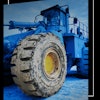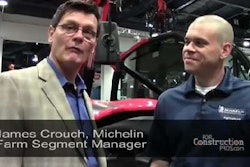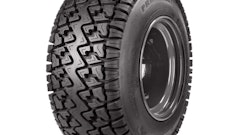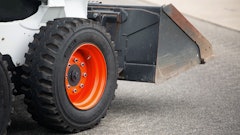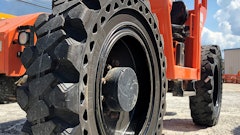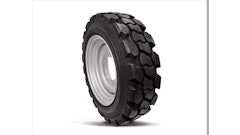
By James Crouch, Compact Line and Farm Segment Marketing Manager, Michelin North America
The construction and industrial markets have traditionally been heavily dependent on bias ply tires because that’s simply the way the industry has always operated. And there is still some perspective among equipment owners that a tire is just tire – a basic commodity purchase that should be based on the lowest price.
More recently, however, that thinking is gradually changing. The conversion from bias ply to radial tires continues to gain momentum for compact equipment, including skid steers, backhoe-loaders and telescopic handlers, as more owners and operators experience the many advantages radial tires offer. They are also realizing that the lowest price does not always equate to a lower cost of ownership.
Several factors are driving the conversion:
- Puncture resistance: Equipment operators have been changing business models to a just-in-time operation. They can’t afford to keep spare tires on hand to replace flats – a common risk with bias ply tires – and they can’t afford the downtime, particularly at work sites that may be miles from the nearest service center. Durability is becoming a bigger issue than ever before, making puncture-resistant, steel-belted radial tires a more attractive option.
- Durability: Radial tires offer much better durability than traditional bias ply tires. One of the most common reasons a compact equipment tire comes out of service is sidewall failure. This failure is often caused by casing fatigue from the very demanding loads imposed on the tires during their normal daily activity. Radial tires are designed to carry more weight, thereby reducing the tendency for sidewall fatigue and failure.
- Operator comfort: Operators who have experienced both radial and bias ply tires can attest to the difference in ride quality. Radial tires’ larger footprint and more even wear produce a much more comfortable ride and smooth transition from lug to lug. In contrast, with bias ply tires, operators can experience vibration and every surface bump is transferred to the cab instead of being absorbed by the tires. Radial tires act as an air bag between the ground and the seat. This isn’t the case with a bias ply or a solid. That shock is transmitted directly to the operator without the radial tire to offer some relief.
- Improved traction: Radials also provide better traction than bias ply tires, again due to greater flex and a larger footprint. This enables compact equipment to more easily access different parts of a jobsite, even under challenging conditions such as hilly terrain or wet ground.
- Fuel savings: Improved traction with radial tires means less tire slippage, and that translates to better fuel economy. With fuel prices slowly on the rise again, greater fuel efficiency and the ability to carry load effectively are becoming more important.
Radial vs. Bias Ply Design
The performance advantages of radial tires result from the differences in the design and manufacturing process. In bias ply tires, the tread and sidewalls share the same plies. All sidewall flexing is transferred to the tread, resulting in deformation in the contact patch, uneven ground pressure, reduced traction and increased friction between the tire and the ground, which accelerates wear and tear on the tire, especially during road travel.
Radial tires also are bringing new technology to the compact equipment industry. For example, the new Michelin Bibload Hard Surface tire offers robust sidewalls and a non-directional tread design with diamond-shaped tread pattern made up of beveled blocks. The diamond pattern provides more contact with the road surface than a bar-based tread pattern for optimal traction and a smoother ride.
Cost of Ownership
One of the main reasons that bias ply tires still dominate the market is that they cost less than radials, at least initially. A more important factor to consider is which tires will deliver the greatest value and return on investment. Because of their superior construction, longer service life, fewer service calls, reduced downtime and overall better performance, the actual cost of ownership of a radial tire is actually less than a bias ply.
These proven economic and performance benefits will continue to gradually shift the industry from bias ply to radial tires. Tire manufacturers recognize the growing demand for a better experience and are continuing to develop new, radial tire models that will deliver benefits for the compact equipment market.
James Crouch serves as compact line and agricultural market segment manager at Michelin North America's U.S. headquarters in Greenville, SC.

